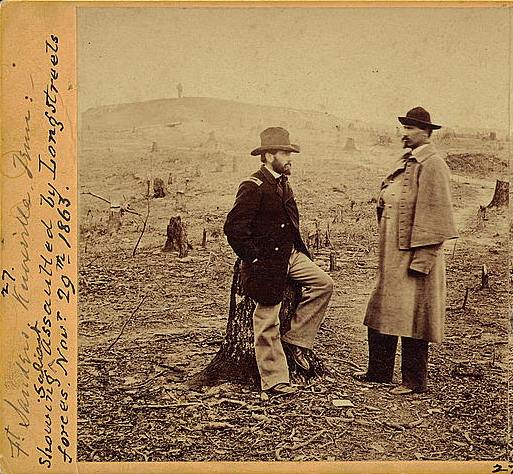Ambrose Burnside, having gotten ahead of the pursing army of James Longstreet at the Battle of Campbell's Station, arrived in the works around Knoxville, Tennessee on November 17. The Confederates came up as well, and began to consider an attack. Longstreet decided that Fort Sanders was the most vulnerable point on the Yankee line. It was west of the town, positioned at a salient in the earthworks. It was 70 feet high and surrounded by an 8 foot ditch.
The Confederate positions were 2,400 yards from the fort. Longstreet's attack plan called for three brigades to be used. No artillery bombardment would be made, to avoid alerting the Federals of the attack, but this advantage was lost anyway because skirmishers were deployed long before the actual attack was made.
The southerners attacked at dawn on November 29th, after a cold night, with rain and snow falling. Moving out, they encountered obstacles made of telegraph wire which strung to trip the men. Alerted to the attack, the Federals opened fire and began shooting the rebels down. Eventually the Confederates made it to the fort, and jumped down into the ditch. But here they were confronted with a problem. Looking through binoculars at the position, Longstreet saw a Union soldier walking across the ditch. Not realizing that the man was on a narrow plank, he concluded that the ditch was very shallow and that scaling ladders would not be needed. But down in the ditch, the Confederates discovered the truth was much different. It was nearly impossible to climb out of the ditch onto the wall, especially slippery frozen as it was. The Confederates fruitlessly tried to dig footholds in the earth, as the Federals poured musketry into the packed men and stabbed with their bayonets, even tossing down artillery shells as hand grenades. Some southerners made it to the parapet by standing on each others shoulders. Several flags were planted on the top, but no breakthrough was made.
 |
| Union engineers on the battlefield |




0 comments:
Post a Comment